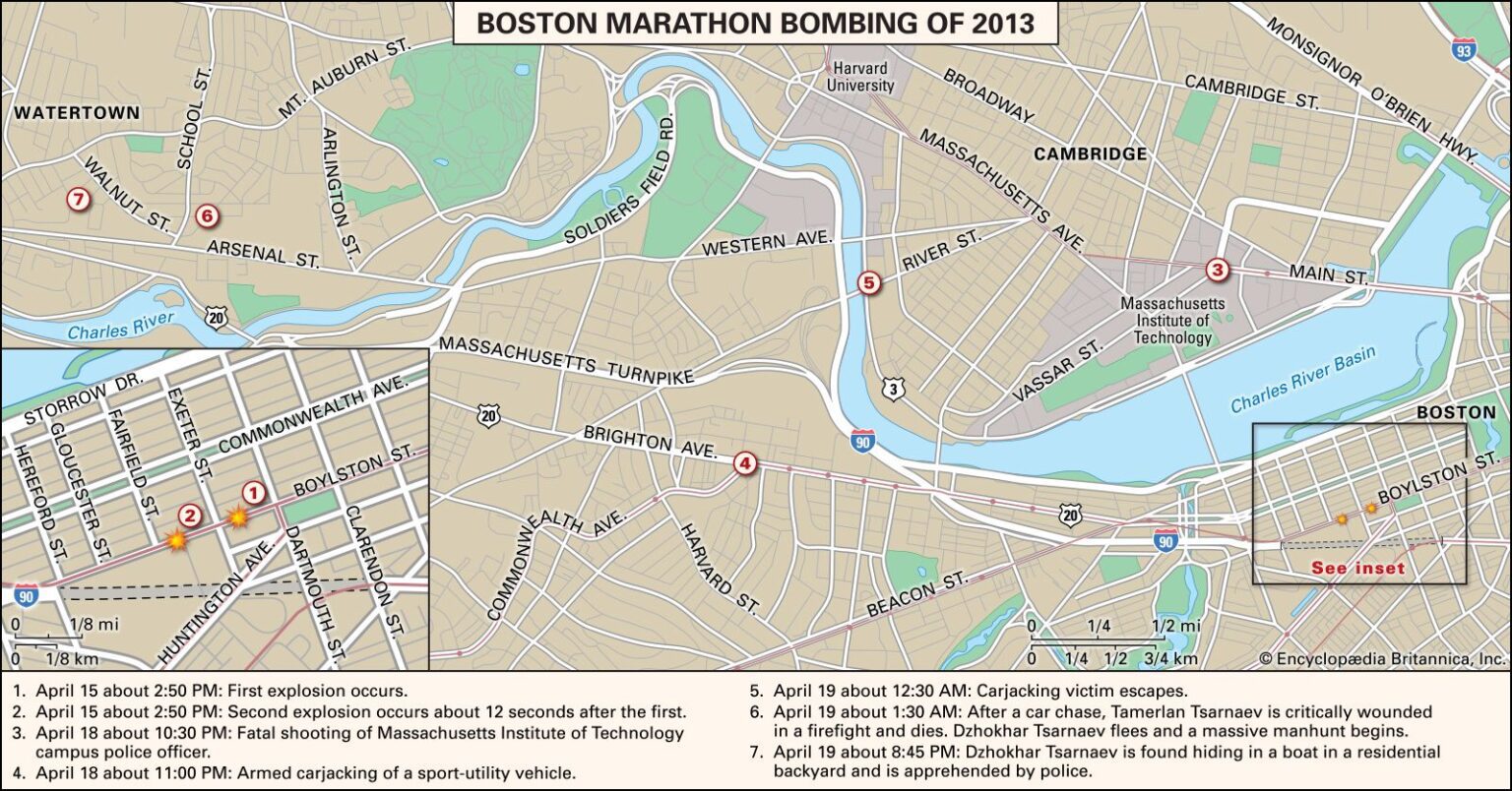The Boston Marathon Bombing: A Historical Overview
On April 15, 2013, the Boston Marathon became the scene of a devastating terrorist attack that shocked the nation and the world. The event, which attracts thousands of participants and spectators annually, was marred by tragedy when two homemade bombs were detonated near the race’s finish line, resulting in the death of three individuals and injuring over 260 others. This incident is now cemented in history as a pivotal moment in U.S. counterterrorism efforts.
Details of the Attack
The Boston Marathon is traditionally conducted on Patriots’ Day, a public holiday in Massachusetts commemorating the American Revolutionary War’s Battles of Lexington and Concord. The atmosphere is typically festive, drawing in large crowds. During the 2013 marathon, approximately 26,000 runners participated, and during the race, the first bomb exploded just before the finish line on Boylston Street. Only moments later, a second bomb detonated nearby, both devices concealed amidst the crowd. Emergency services transformed a medical tent into a triage center in response to the casualties, and a vast crime scene spanned 15 blocks.
The Aftermath and Investigation
Following the blasts, law enforcement officials engaged the public for help, seeking photographs and video evidence that could aid their investigation. It was uncovered that the bombs had been fashioned using pressure cookers filled with explosives, nails, and ball bearings. On April 18, the FBI released images of two suspects, later identified as Tamerlan and Dzhokhar Tsarnaev. As the investigation unfolded, the nation remained on alert for possible additional threats and scrutiny.
The Manhunt for the Tsarnaev Brothers
The events escalated further when a Massachusetts Institute of Technology police officer was shot and killed shortly after the bombing, leading to a series of violent encounters involving the suspects in the Boston suburbs. During a dramatic firefight in Watertown, Tamerlan Tsarnaev was injured and ultimately died following a series of confrontations with police. Dzhokhar Tsarnaev, however, evaded capture, prompting an unprecedented manhunt across Greater Boston, where residents were instructed to stay indoors as law enforcement scoured the area.
The Capture and Legal Proceedings
Dzhokhar Tsarnaev was finally apprehended on April 19, 2013, when a local resident discovered him hiding in his boat. Following a swift trial, Tsarnaev was found guilty on 30 counts related to the bombing, and 17 of those charges had the potential for the death penalty. On May 15, 2015, he was sentenced to death, though this sentence underwent multiple legal challenges until the U.S. Supreme Court reinstated it in March 2022, following a period of vacillation in legal rulings.
The Motivations Behind the Attack
Investigators sought to uncover the motivations of the Tsarnaev brothers, who immigrated to the United States from Chechnya in the early 2000s. Their radicalization appeared to be self-directed, with reports indicating that they obtained bomb-making information from online sources associated with al-Qaeda. Tamerlan had previously exhibited signs of extremism, which were exacerbated by his time abroad. Although there appeared to be no direct connections to established terrorist networks, their actions raised significant questions about radicalization patterns and individual motivations in terrorism.
Reflection and Ongoing Impact
The Boston Marathon bombing has left an indelible mark on American society, altering perceptions of security in public spaces and prompting widespread discussion about national safety policies. Moreover, the event incited a range of responses from community resilience efforts to an ongoing examination of the root causes of domestic terrorism. As annual marathons continue, the memory of the 2013 attack serves as a reminder of the continuing threat posed by individuals radicalized online and the importance of vigilance in maintaining public safety.
